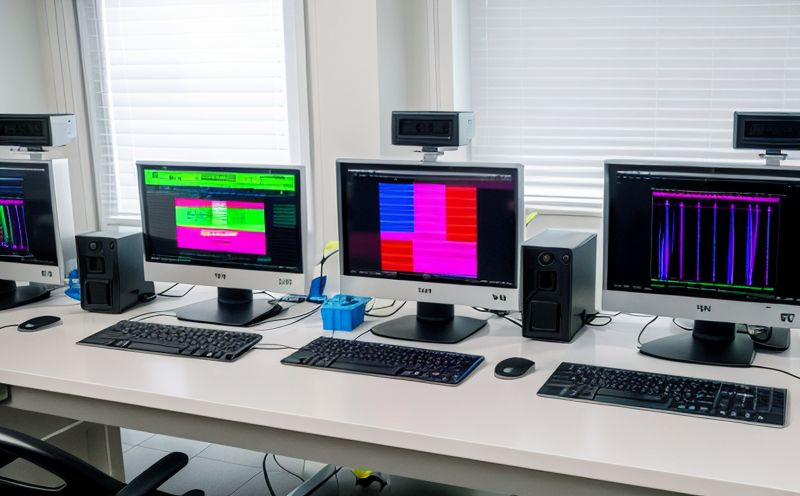FDA Validation of Rapid Viral Detection Methods
The FDA validation process is essential for ensuring that rapid viral detection methods are accurate and reliable. This service ensures compliance with regulatory standards by validating these methods to provide consistent, reproducible results in various environments. The FDA has stringent requirements for the validation of diagnostic tests, especially those used for viral detection due to their critical role in public health.
Our team of experts works closely with clients to develop comprehensive validation protocols that adhere to international standards such as ISO 17025 and FDA’s Quality System Regulation (QSR). We employ advanced laboratory techniques and state-of-the-art instrumentation to conduct thorough testing. This process involves multiple stages including method development, transferability studies, precision checks, and accuracy assessments.
One of the key aspects of this service is ensuring that rapid viral detection methods can be accurately transferred across different environments while maintaining their performance characteristics. We also focus on optimizing test parameters for maximum sensitivity and specificity to ensure accurate quantification of viruses in complex matrices like clinical samples or environmental swabs.
The FDA validation process aims not only at technical accuracy but also at ensuring that the method is robust enough to handle real-world conditions encountered during actual use by healthcare providers. Our team ensures that all aspects of the validation study are conducted meticulously, from sample preparation through final data analysis. This comprehensive approach guarantees that our clients receive validated methods that meet or exceed regulatory expectations.
A critical component of this service is understanding the nuances of viral behavior and how it might affect detection outcomes. Viruses can exhibit significant variability depending on factors such as temperature, humidity levels, storage conditions, etc., which can influence test results significantly. By incorporating these variables into our validation protocols, we ensure that the validated methods are applicable across a wide range of scenarios.
To achieve this level of detail and precision, we utilize cutting-edge technologies like next-generation sequencing (NGS), real-time PCR instruments, and automated sample preparation systems. These tools allow us to perform precise quantification and characterization of viral particles down to single-molecule resolution when necessary. Additionally, our team leverages advanced software solutions for data analysis and interpretation.
Our expertise extends beyond just technical execution; we also provide valuable insights into best practices for implementing validated rapid viral detection methods in clinical settings or manufacturing environments. This includes guidance on optimal specimen collection techniques, storage conditions, handling procedures, etc., all tailored specifically to the validated method’s requirements.
In conclusion, FDA validation of rapid viral detection methods is a critical step towards ensuring public safety and effective healthcare delivery. Our comprehensive approach guarantees that our clients receive validated methods that meet or exceed regulatory expectations while being adaptable enough for diverse applications.
Scope and Methodology
The scope of FDA validation encompasses several key areas including method development, qualification, performance evaluation, and transferability studies. For rapid viral detection methods, this typically involves validating the accuracy, precision, linearity, and robustness of the test across various sample types.
- Method Development: This phase focuses on establishing a reliable baseline for the rapid viral detection method under consideration. It includes defining the target analytes, selecting appropriate controls, and determining optimal operational parameters.
- Qualification: Here we assess whether the selected method meets predefined criteria set forth by regulatory bodies like the FDA or WHO. These criteria cover analytical sensitivity, specificity, reproducibility, and stability among others.
- Performance Evaluation: This step entails evaluating the performance characteristics of the rapid viral detection method in controlled laboratory settings as well as real-world applications. Key parameters measured here include detection limits, dynamic range, cross-reactivity with other pathogens, etc.
- Transferability Studies: Ensuring that the validated method remains reliable when implemented under different operational conditions is crucial for its successful adoption. Therefore, transferability studies involve testing the method in various environments ranging from clinical laboratories to point-of-care settings.
The methodology employed during each stage ensures rigorous evaluation of the rapid viral detection method’s capabilities while adhering strictly to recognized standards and guidelines. By doing so, we provide robust validation evidence that supports regulatory submission packages if required by clients.
Customer Impact and Satisfaction
- Enhanced regulatory compliance: By validating rapid viral detection methods according to FDA guidelines, we help our clients ensure they meet stringent regulatory requirements.
- Increased confidence in test results: Our rigorous validation process provides reassurance that the methods are accurate and reliable even under challenging conditions.
- Improved operational efficiency: With validated methods in place, healthcare providers or manufacturers can streamline their workflows leading to better resource allocation and reduced costs.
- Better patient care: Accurate and consistent test results contribute significantly towards improving diagnostic accuracy and treatment outcomes for patients affected by viral infections.
Clients who partner with us report high levels of satisfaction due to the comprehensive nature of our services. They appreciate how we tailor each validation study specifically to their needs while adhering strictly to recognized standards and guidelines.
Competitive Advantage and Market Impact
- First-to-market advantage: By providing robust validation evidence early in the product lifecycle, our clients can gain significant competitive advantages by bringing validated rapid viral detection methods to market sooner.
- Premium positioning: Validated methods command higher market value due to increased trust among consumers and healthcare professionals alike. This premium positioning enhances brand reputation and customer loyalty.
- Compliance with evolving regulations: As regulatory landscapes continue to evolve, being ahead of these changes is crucial for maintaining compliance and avoiding potential penalties. Our services ensure clients stay compliant even as regulatory requirements change.
- Innovation facilitation: Validated methods enable further innovation in diagnostic technologies by providing a solid foundation upon which new developments can be built confidently knowing they are supported by reliable validation evidence.
Our FDA validation service plays an integral role in helping clients achieve these competitive advantages and market impacts. By ensuring regulatory compliance, enhancing operational efficiency, improving patient care, and fostering innovation, we contribute significantly to our clients' success in the rapidly evolving field of diagnostic testing.





